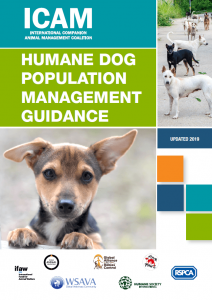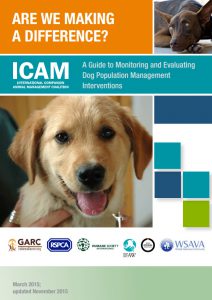
Planning a dog population management programme
There is no one-size-fits-all approach to dog population management. At ICAM, we know from the experience of our members that the characteristics of dog populations can vary across the world.
This means planning is vital for any humane dog population management programme to be effective. On this page you will find resources that provide guidance on planning an intervention.
The only part we consider to be universal is the need for a comprehensive programme that focuses on the causes of a roaming dog population, and not just treating the symptom.
In our Humane Dog Population Management guidance, you can find advice on:
- Initial data collection and assessment
- How to identify and prioritise factors affecting dog population size
- Advice on designing an intervention.
And in our ‘Are We Making a Difference?’ guide to monitoring and evaluation, you can find tools for gathering baseline information including:
- Questionnaire surveys
- Population street surveys
- How to use secondary sources of information.
These documents are written by individual members of the lCAM Coalition and reflect the views of those individual members and not necessarily of the entire Coalition, however all members of the Coalition have approved that these documents should be made available through this site.
Related downloads
 Humane Dog Population Management 2019 Update
Humane Dog Population Management 2019 UpdateICAM’s updated (2019) guidance on how to manage dog populations humanely and effectively.Read More
 Are we making a difference? A Guide to Monitoring and Evaluating Dog Population Management Interventions (2015)
Are we making a difference? A Guide to Monitoring and Evaluating Dog Population Management Interventions (2015)The ICAM coalition has developed guidance on monitoring and evaluation of dog population management interventions that supports academics, practitioners and funders to track progress, learn and subsequently improve their impact through the use of measurable indicators.Read More
Related online tools
 Dog population management impact assessment tool
Dog population management impact assessment toolTake a look at our “Are We Making a Difference?” monitoring and evaluation guidance, and then use this interactive tool to help you choose which indicators to use to help you measure the impact of your dog population management programme.Read More
Related projects
 Indicators project
Indicators projectEvery year, ICAM embarks on new projects to benefit the dog population management community. In 2015, we published the first comprehensive guidance on monitoring and evaluating dog population management interventions.Read More
YOUR FEEDBACK
Feedback from people like you is invaluable to us.
Help us improve by letting us know how our tools work in practice or by sending us any
suggested documents.











